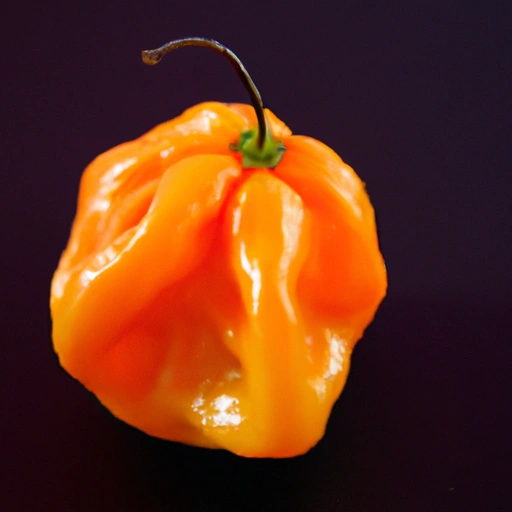Habanero Chile
Description

The Habanero Chile is a small, fiery pepper praised for its eye-watering spiciness and fruity, floral flavor. Known for its lantern shape and varying colors, ranging from green to bright orange and red when ripe, this chile is a staple in many hot sauces and spicy dishes. The Scoville heat unit rating for habaneros is typically between 100,000 and 350,000, making them significantly hotter than jalapeños.
Common uses
Habanero chiles are widely used to make fiery salsas, hot sauces, marinades, and spice rubs. They are also incorporated into stews, soups, and even desserts to add a spicy kick.
Nutritional value
Calories
Typically, a habanero pepper contains about 18 calories (75 kJ) per 1 oz (28 grams).
Protein
Each habanero contains approximately 0.8 grams of protein per 1 oz (28 grams).
Fat
Habanero chiles contain a negligible amount of fat, less than 0.2 grams per 1 oz (28 grams).
Carbohydrates
The carbohydrate content of a habanero is roughly 4 grams per 1 oz (28 grams), with about 2.4 grams being dietary fiber.
Vitamins
Habanero peppers are an excellent source of Vitamin C, providing about 60 mg per 1 oz (28 grams), and they also contain small amounts of Vitamins A and B.
Minerals
They offer a variety of minerals such as potassium, at about 156 mg per 1 oz (28 grams), and smaller amounts of magnesium and iron.
Health benefits
Due to their high capsaicin content, habanero chiles can boost metabolism, promote heart health, and provide pain relief. The vitamins and minerals found in habaneros contribute to immune system support and overall nutritional well-being.
Potential risks
Consuming habaneros can pose risks such as digestive irritation and exacerbation of certain conditions like acid reflux. Handling habaneros requires caution to avoid skin and eye irritation; wearing gloves is recommended.
Common recipes
Habanero chiles are used in a variety of recipes such as hot sauces, salsas, and spicy chocolate treats. They can also be found in Caribbean jerk seasoning and marinades.
Cooking methods
Habaneros can be roasted, grilled, sautéed, or used fresh to impart their heat and flavor in dishes.
Pairing with other ingredients
They pair well with sweet fruits like mango and pineapple, which can balance their heat, and with proteins such as pork, chicken, or fish.
Summary
The habanero chile is a versatile and intensely spicy pepper, rich in history and flavor. It offers culinary diversity and potential health benefits but should be handled with care due to its heat.